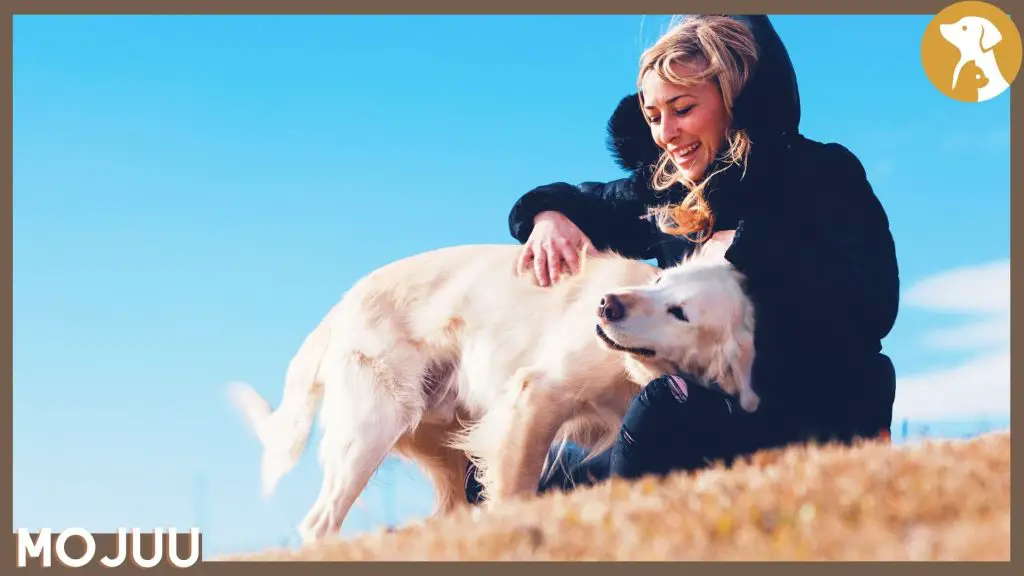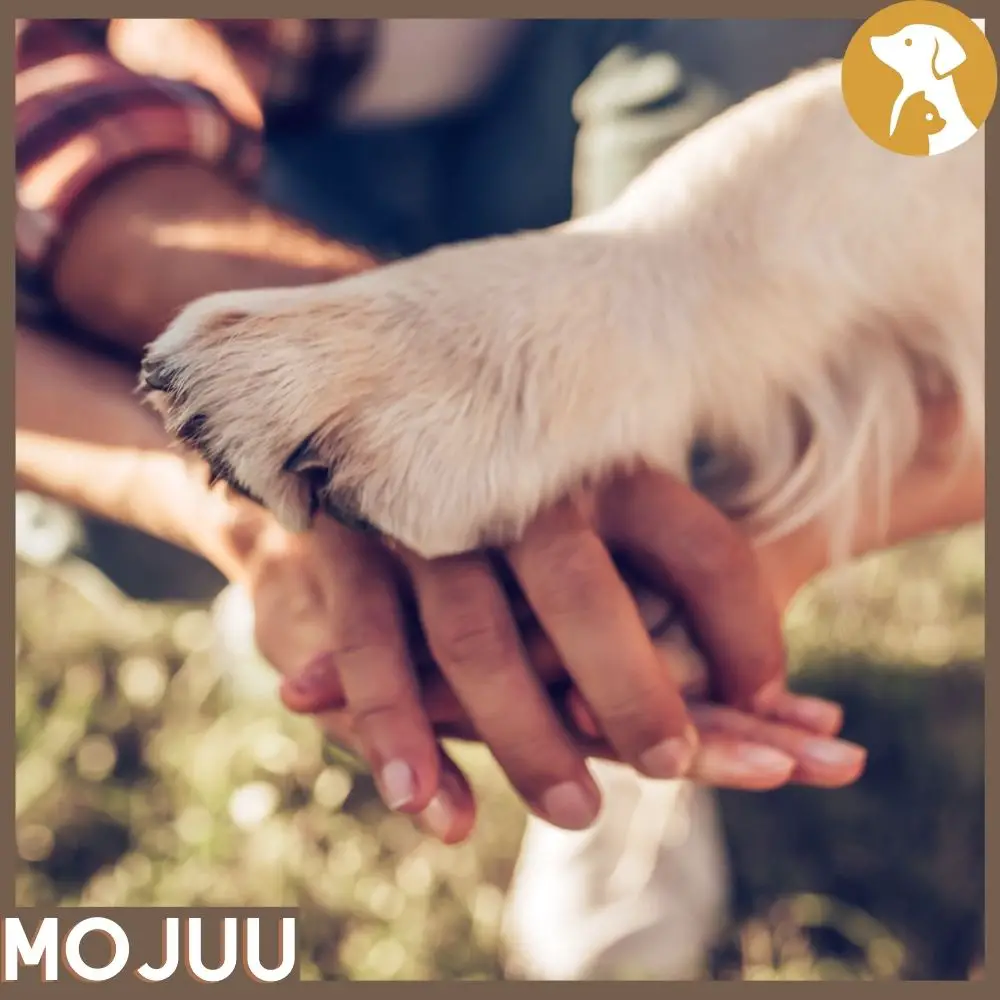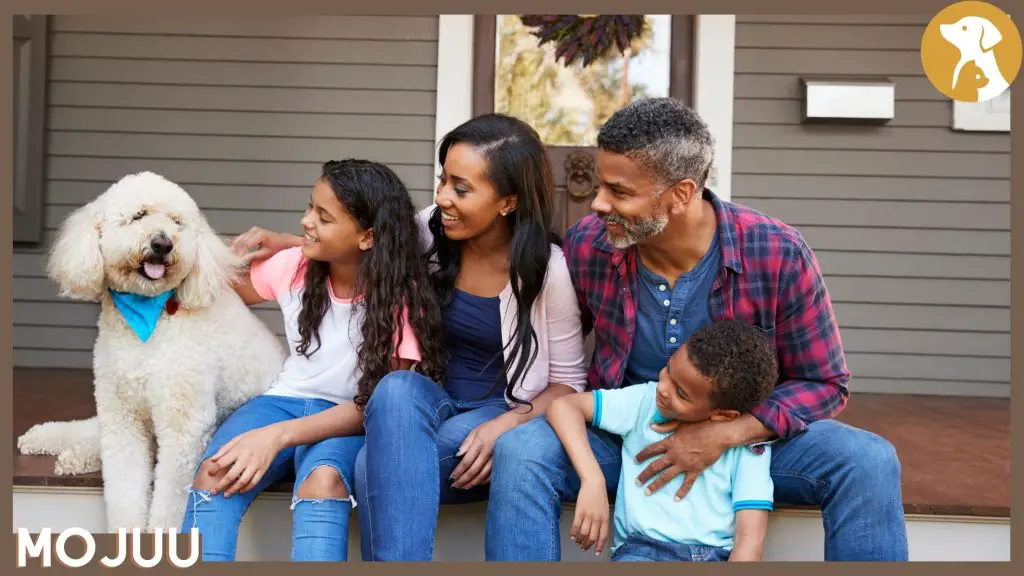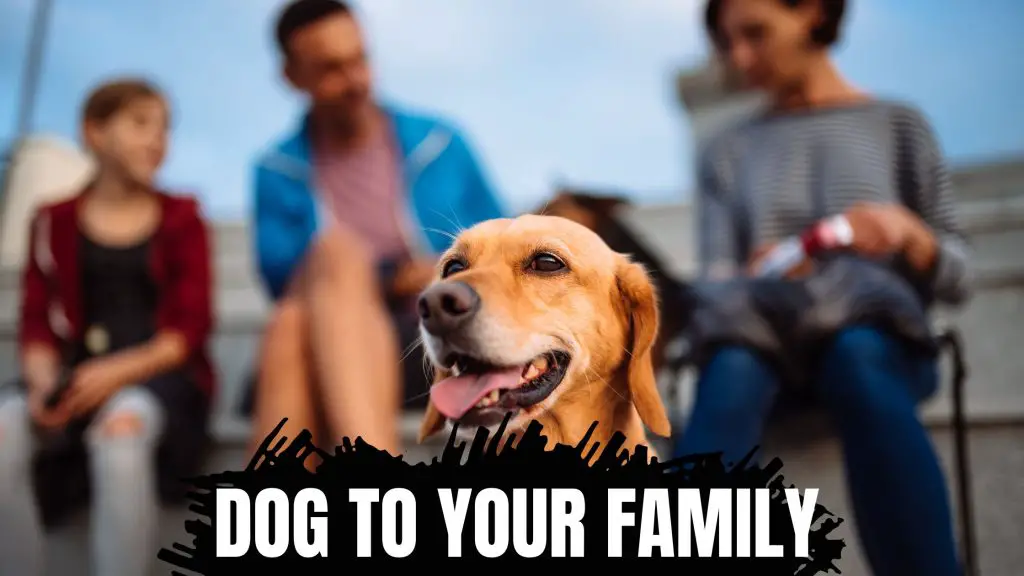Bringing a new dog into your family is a heartwarming journey filled with excitement and anticipation. The pitter-patter of paws, the wagging tail, and those soulful eyes – a new canine companion can bring immeasurable joy. However, this introduction is not just a momentary event; it’s the foundation of a lifelong bond.
As you embark on this adventure, it’s crucial to recognize the significance of the first encounters between your family and the new dog. This initial phase shapes the dog’s perception of their new environment and family members, influencing their level of comfort, trust, and overall well-being.
Think of it as laying the groundwork for a beautiful story, where each interaction becomes a chapter in the book of your shared experiences. Throughout this guide, we’ll unravel the intricacies of introducing a dog to your family, navigating the complexities with care and consideration. So, let’s dive into the heart of the matter and set the stage for a harmonious journey of companionship.
How do you introduce a dog to your family?

The arrival of a new dog is a momentous occasion that marks the beginning of a shared adventure with your family. While the excitement is palpable, ensuring a smooth introduction is crucial for establishing a strong foundation. Let’s explore the key steps to make this transition as seamless as possible.
- 1. Create a Calm Environment: Before the grand introduction, set the stage by creating a calm and welcoming environment. Dogs are highly attuned to their surroundings, and a peaceful atmosphere can help alleviate stress during their initial moments in the new home.
- 2. Gradual Family Introductions: Rather than overwhelming the new dog with a crowd, introduce family members gradually. Allow the dog to acclimate to each person, offering a chance for positive interactions without feeling bombarded.
- 3. Patience is Key: Dogs, like humans, need time to adjust to new environments and faces. Exercise patience during the initial interactions, giving the dog the opportunity to approach family members at their own pace.
- 4. Familiar Scents and Items: Incorporate familiar scents into the introduction process. This can include items from the dog’s previous home, a blanket, or a toy that carries comforting smells, providing a sense of familiarity.
- 5. Use Positive Reinforcement: Positive reinforcement is a powerful tool. Reward the dog with treats, praise, and affection when they exhibit positive behavior during the introduction. This helps create positive associations with family members.
- 6. Monitor Body Language: Dogs communicate through body language. Pay close attention to their signals – wagging tails, relaxed posture, and friendly gestures indicate comfort, while signs of stress may include cowering or avoidance.
- 7. Create Safe Spaces: Provide the new dog with a designated safe space where they can retreat if they feel overwhelmed. This refuge allows them to take breaks and gradually build confidence in their new surroundings.
- 8. Leash Introductions: For safety, consider using leashes during the initial introductions. This ensures control over the situation and prevents any unforeseen interactions that might cause stress for both the dog and family members.
- 9. Children and Dog Interaction: If there are children in the family, supervise their interactions closely. Teach them gentle approaches and the importance of respecting the dog’s boundaries to foster a positive relationship from the start.
- 10. Establish Routine and Consistency: Dogs thrive on routine and consistency. Establish a predictable daily routine early on, providing the new family member with a sense of stability and security.
Embarking on the journey of introducing a dog to your family is an art that combines patience, understanding, and a genuine love for your new furry friend. By following these steps, you pave the way for a warm and lasting connection between your family members and the newest addition to your home.
How long does it take for a dog to get used to a family?

The adjustment period for a new dog joining your family varies widely and is influenced by factors such as the dog’s temperament, age, and past experiences. Patience is crucial during this time, avoiding any pressure and allowing the dog to set the pace for building trust and comfort. Some dogs may quickly feel at ease, while others may take a bit more time to acclimate.
Familiarity with the new environment and family members plays a significant role in expediting the adaptation process. Introducing the dog to items with familiar scents, like bedding or toys from their previous home, can provide comfort establishes a structured approach to adaptation.
Various individual factors also influence the adaptability of a dog. Age is a key consideration – puppies may adjust more quickly, while older dogs might require additional time. Past experiences shape their reactions; those with positive histories may adapt more swiftly, while dogs with traumatic backgrounds may need extra patience and understanding.
In essence, the timeframe for a dog to get used to a new family is a unique and subjective journey. Creating a supportive environment, practicing patience, and acknowledging the individual needs of your new furry family member contribute to the gradual building of a lasting bond. Every wag of the tail and shared moment becomes a step in the positive direction of integration.
Wat Is The 3 3 3 Rule For Dogs?

Introducing the “3-3-3” rule for dogs is a valuable approach to facilitate a smooth transition and build a strong foundation for their integration into your family. This rule encompasses the initial three days, three weeks, and three months after bringing the new dog home.
During the first three days, it’s crucial to allow the dog to decompress in a quiet and safe space. This period provides the dog with the opportunity to acclimate to their new surroundings at their own pace, reducing stress and promoting a sense of security.
The next three weeks involve gradual exposure to the family routine and environment. Introduce the dog to various family members, daily activities, and the overall household atmosphere. This phase allows the dog to build familiarity with their new surroundings while fostering positive associations.
The final three months focus on building trust and solidifying the bond between the dog and your family. This period is critical for establishing a sense of security, allowing the dog to feel comfortable and confident in their new home. Consistency, positive reinforcement, and a supportive environment are key elements during this crucial phase of the “3-3-3” rule.
By adhering to this thoughtful and structured approach, you provide the new dog with the time and space needed to adjust, ensuring a positive and lasting integration into your family dynamic.
At What Age Do Dogs Pick Their Person?
The age at which dogs form a strong bond with a specific person can vary, influenced by a combination of factors. Dogs are known for their loyalty and capacity for forming deep connections with their human companions. While there isn’t a precise age at which this bond is formed, certain patterns emerge.
Puppies often display an inclination towards bonding with the person responsible for their care during their early weeks of life. This initial attachment is rooted in the caregiver providing essential needs like feeding, warmth, and comfort. As the puppy grows, this bond strengthens through shared experiences and positive interactions.
It’s essential to note that individual temperament and the dog’s experiences play significant roles in the bonding process. Some dogs may form strong connections early on, while others might take more time to develop a preference for a specific person.
The critical aspect in fostering a strong bond is consistent positive interactions. Spending quality time, engaging in play, and providing care contribute to the dog’s overall trust and attachment. Building a connection is an ongoing process that deepens over time, transcending specific age milestones.
In conclusion, while there isn’t a definitive age when dogs pick their person, the foundation for a strong bond is laid during their early weeks and months. Consistency, positive experiences, and shared moments contribute to the development of a lasting and meaningful connection between the dog and their chosen person.
What Age Do Dogs Get Easier?

Navigating the different developmental stages of a dog’s life is a unique journey, and the question of when dogs become easier is one that many pet owners ponder. The ease of caring for a dog often correlates with their age and the associated life stages.
Puppyhood, while undeniably adorable, is renowned for its challenges. Puppies are full of boundless energy, curiosity, and an eagerness to explore the world around them. This stage demands patience, consistent training, and a watchful eye to manage the exuberance and address the teething and housebreaking phases.
As dogs transition into adolescence, typically around six months to a year, some aspects of care become more manageable. Energy levels may stabilize, and certain behaviors tend to improve with consistent training. However, adolescence can bring its own set of challenges, such as testing boundaries and asserting independence.
Many pet owners find that as dogs reach adulthood, usually between one to two years, they tend to become more settled and predictable. With foundational training in place, dogs often exhibit a better understanding of household expectations, making day-to-day life more comfortable for both the pet and the owner.
While there isn’t a one-size-fits-all answer to when dogs get easier, the general consensus is that the challenges of puppyhood and adolescence gradually subside as the dog matures. Consistent training, socialization, and patience contribute to a smoother transition through the various stages of a dog’s life. Ultimately, the bond formed and the joy shared with a canine companion make every stage of their life uniquely rewarding.
What are good signs when introducing dogs?
Relaxed Body Language
- Wagging Tails: Look for a relaxed wagging tail, indicating a positive and friendly demeanor.
- Loose Posture: Observing a lack of stiffness in the body suggests comfort and ease.
Playful Interactions
- Gentle Play: Dogs engaging in activities like chasing, wrestling, or sharing toys demonstrate a healthy dynamic.
- Reciprocal Play: Positive interactions where both dogs actively participate in play signify a harmonious introduction.
Shared Space without Tension
- Comfortable Coexistence: Dogs sharing the same space without signs of tension or aggression indicates a positive rapport.
- Calm Coexistence: Tranquil behavior in a shared environment suggests a successful and stress-free introduction.
Mutual Curiosity
- Sniffing and Exploration: Dogs displaying curiosity through sniffing and exploration show an interest in getting to know each other.
- Non-Confrontational Approach: A gentle and non-confrontational approach during initial interactions signals a positive beginning.
Calm and Relaxed Demeanor
- Calmness: Both dogs maintaining a calm and relaxed demeanor during the introduction indicates a favorable environment.
- No Signs of Agitation: Absence of signs like growling, barking, or raised hackles suggests a peaceful encounter.
By recognizing these positive signs during the introduction of dogs, you can ensure a smoother transition and foster a positive relationship between the canine companions.
Will my dog ever accept the new dog?

Introducing a new dog to your existing furry family member can be a delicate process, and a common concern is whether the resident dog will ever fully accept their new canine companion. Understanding the dynamics of canine relationships and implementing strategic approaches can significantly influence the likelihood of acceptance.
Factors Influencing Acceptance
- Individual Personalities: Dogs, like humans, have unique personalities. The compatibility of individual traits plays a crucial role in acceptance.
- Past Experiences: Previous interactions with other dogs and socialization experiences can influence a dog’s willingness to accept a new companion.
Strategies to Foster Acceptance
- Gradual Introduction: Allow the dogs to acclimate to each other gradually, starting with controlled and supervised meetings in a neutral environment.
- Positive Reinforcement: Reward positive behavior with treats and praise to create positive associations with each other.
- Shared Activities: Engage the dogs in shared activities like walks, playtime, or feeding to promote bonding.
Signs of Acceptance
- Friendly Interactions: Look for signs of friendliness, such as shared naps, grooming, or gentle play, indicating growing acceptance.
- Shared Space Comfortably: Dogs sharing common spaces without tension or resource guarding demonstrate acceptance.
Patience and Observation
- Time as a Healing Factor: Allow time for the dogs to adjust to each other’s presence, as acceptance may develop over an extended period.
- Close Monitoring: Observe their interactions closely, stepping in if signs of tension arise, and providing reassurance.
Seeking Professional Guidance
- Consulting a Professional: If challenges persist, seeking advice from a professional dog trainer or behaviorist can provide tailored solutions.
Understanding that acceptance is a nuanced process and may take time is crucial. Each dog is an individual with its own temperament and experiences. By employing patience, strategic introductions, and positive reinforcement, you increase the likelihood of your existing dog accepting the new addition, paving the way for a harmonious canine coexistence.
Do Dogs Accept New Dogs?

The acceptance of new dogs into a household hinges on the intricate dynamics of canine social behavior. Dogs, being pack animals by nature, have inherent instincts to form social structures resembling packs. The willingness of existing dogs to accept a new member is influenced by factors like pack hierarchy dynamics and the individual temperament of each dog.
Facilitating a harmonious introduction process is crucial. Choosing a neutral environment for the initial meeting helps prevent territorial conflicts, and close supervision during the first interactions guides positive behavior. Individual dog sociability and past socialization experiences also play significant roles. Dogs with positive experiences are often more accepting of new companions.
Age and energy level considerations are important factors. Adult dogs may exhibit more tolerance towards puppies, and dogs with similar energy levels may find it easier to accept each other. Gradual acclimatization and positive reinforcement contribute to a smoother introduction process, with slow, methodical introductions over time easing the dogs into their new dynamic.
Signs of acceptance and bonding become apparent through playful interactions and shared resting spaces. Dogs engaging in playful activities demonstrate a positive and accepting relationship, while willingly sharing resting spaces signals growing acceptance and comfort.
While there are no absolute guarantees in canine socialization, understanding the innate pack instincts of dogs and implementing thoughtful introduction strategies significantly enhances the chances of a harmonious acceptance of new dogs. Patience, careful observation, and a proactive approach contribute to fostering positive canine relationships within your home.
Conclusion
Navigating the introduction of a new dog into your family involves a delicate balance of understanding, patience, and proactive measures. Each dog is a unique individual, and the dynamics of canine relationships can be complex. As you embark on this journey, consider the importance of gradual introductions, positive reinforcement, and the creation of a supportive environment.
While the process may take time and necessitate careful observation, the potential for a harmonious coexistence is significant. By respecting the individuality of each dog, fostering positive interactions, and being attentive to signs of acceptance, you pave the way for a strong bond and a joyous shared journey.
Remember, acceptance is a nuanced journey influenced by various factors, including age, temperament, and past experiences. Celebrate the small victories and milestones as your dogs forge connections and find their places within the pack.
FAQs – Unraveling Canine Social Mysteries
1. Can all dogs eventually accept a new companion?
The ability of dogs to accept a new companion varies. Factors like individual temperament, past experiences, and the introduction process play pivotal roles. While some dogs may readily embrace a new friend, others might require more time and deliberate introductions.
2. What signs indicate that dogs are accepting each other during introductions?
Positive signs include relaxed body language, playful interactions, shared spaces without tension, and mutual curiosity. These behaviors suggest a growing acceptance and potential for a positive relationship.
3. Is it easier for older dogs to accept new puppies?
Generally, older dogs may exhibit more tolerance towards puppies. The playful energy of puppies might be initially met with patience from older counterparts. However, the dynamics depend on the individual personalities of the dogs involved.
4. How long does it take for dogs to fully accept each other?
The timeline for dogs to fully accept each other varies. It can range from days to weeks or even months, depending on factors like individual personalities, past experiences, and the consistency of positive interactions.
5. What should I do if my dogs are not accepting each other?
They can assess the specific dynamics at play and provide tailored strategies to promote acceptance and positive relationships among your dogs.







